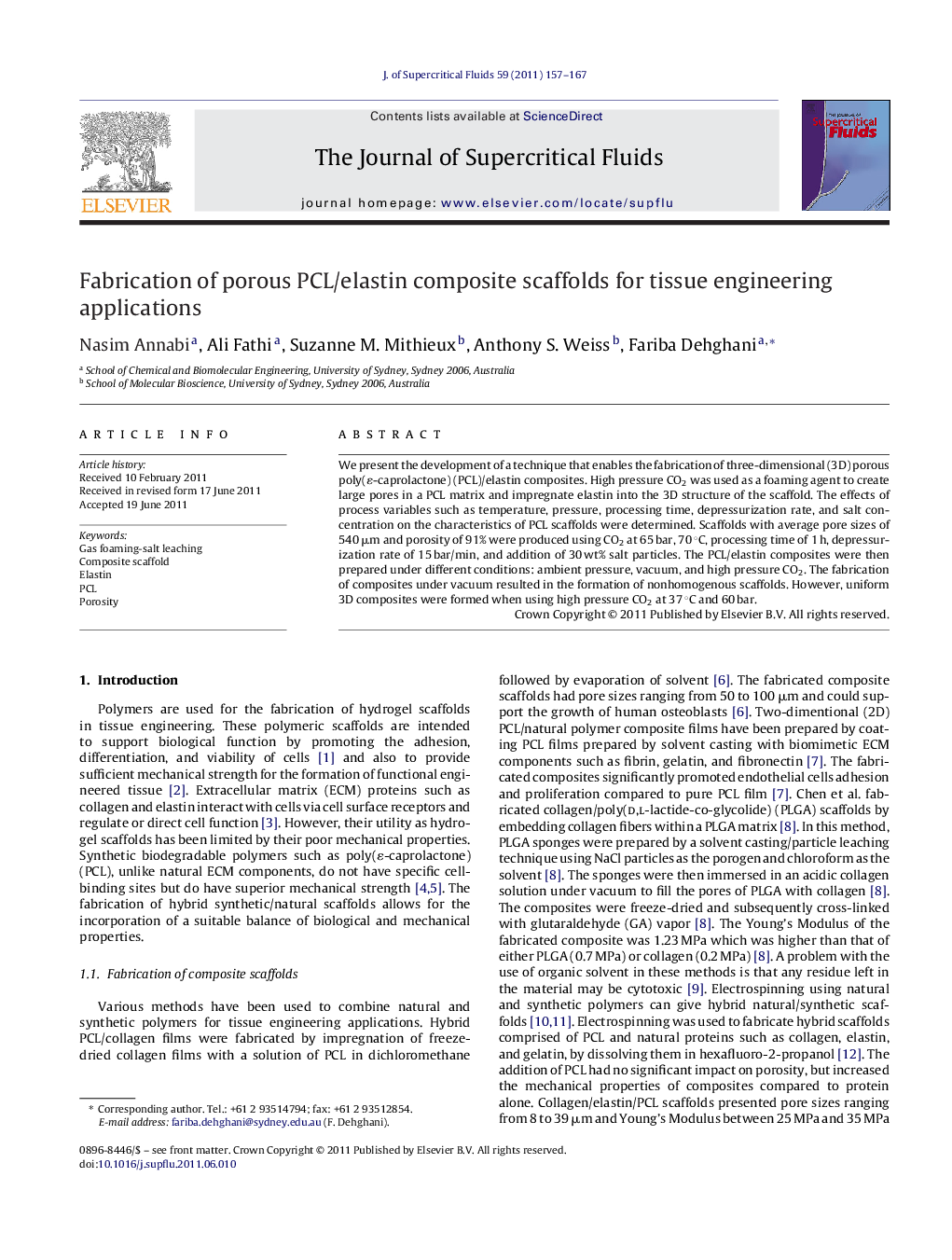| کد مقاله | کد نشریه | سال انتشار | مقاله انگلیسی | نسخه تمام متن |
|---|---|---|---|---|
| 231202 | 1427418 | 2011 | 11 صفحه PDF | دانلود رایگان |

We present the development of a technique that enables the fabrication of three-dimensional (3D) porous poly(ɛ-caprolactone) (PCL)/elastin composites. High pressure CO2 was used as a foaming agent to create large pores in a PCL matrix and impregnate elastin into the 3D structure of the scaffold. The effects of process variables such as temperature, pressure, processing time, depressurization rate, and salt concentration on the characteristics of PCL scaffolds were determined. Scaffolds with average pore sizes of 540 μm and porosity of 91% were produced using CO2 at 65 bar, 70 °C, processing time of 1 h, depressurization rate of 15 bar/min, and addition of 30 wt% salt particles. The PCL/elastin composites were then prepared under different conditions: ambient pressure, vacuum, and high pressure CO2. The fabrication of composites under vacuum resulted in the formation of nonhomogenous scaffolds. However, uniform 3D composites were formed when using high pressure CO2 at 37 °C and 60 bar.
Figure optionsDownload as PowerPoint slideHighlights
► In this study we fabricated 3D porous poly(ɛ-caprolactone) (PCL)/elastin composite scaffolds, suitable for tissue engineering applications.
► Pore size and porosity of the fabricated PCL scaffolds were tuned by changing the processing parameters.
► High pressure CO2 was used to homogeneously diffuse elastin within the 3D structure of PCL scaffold.
► We conclude that this technique can be used for the fabrication of composite scaffolds, suitable for tissue engineering applications, e.g. bone regeneration.
Journal: The Journal of Supercritical Fluids - Volume 59, November 2011, Pages 157–167